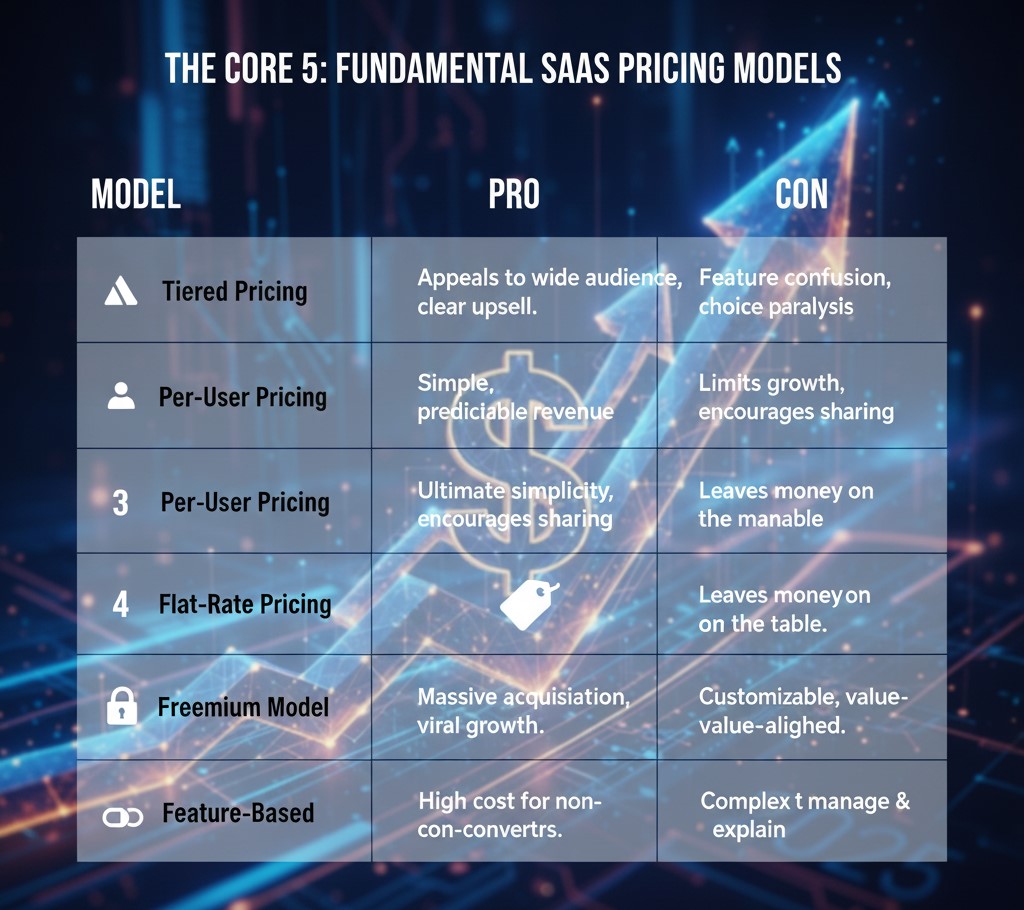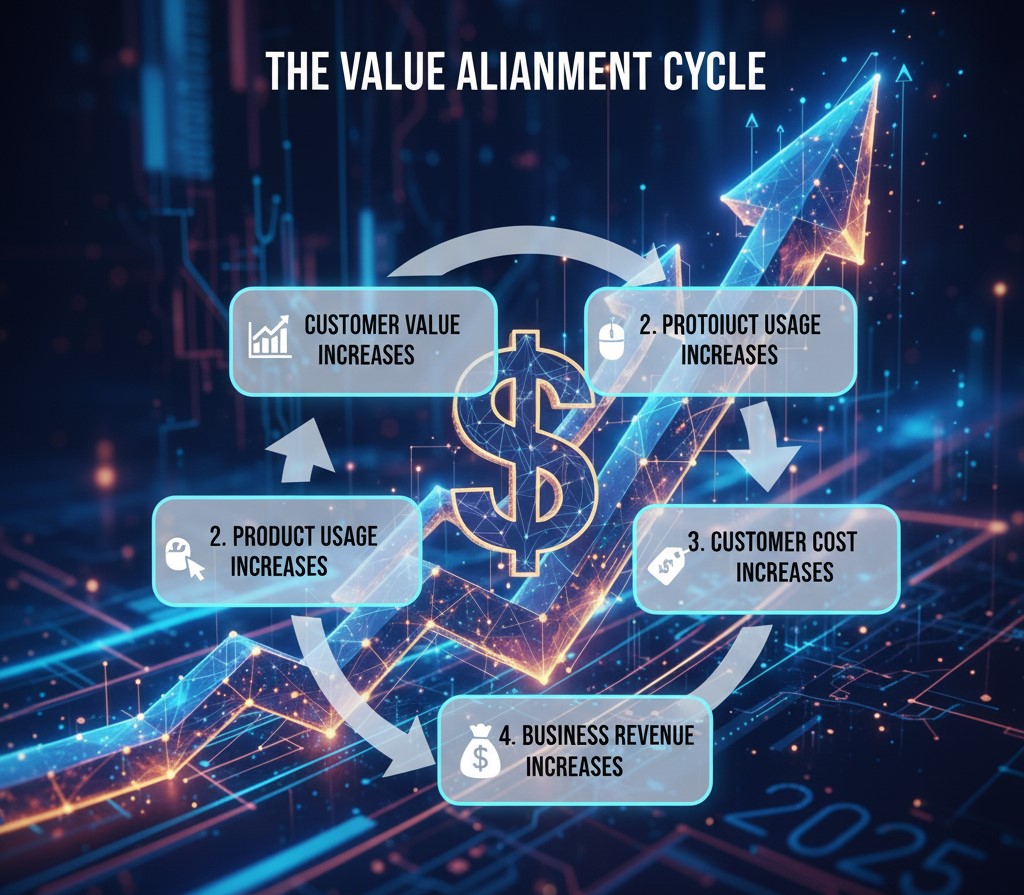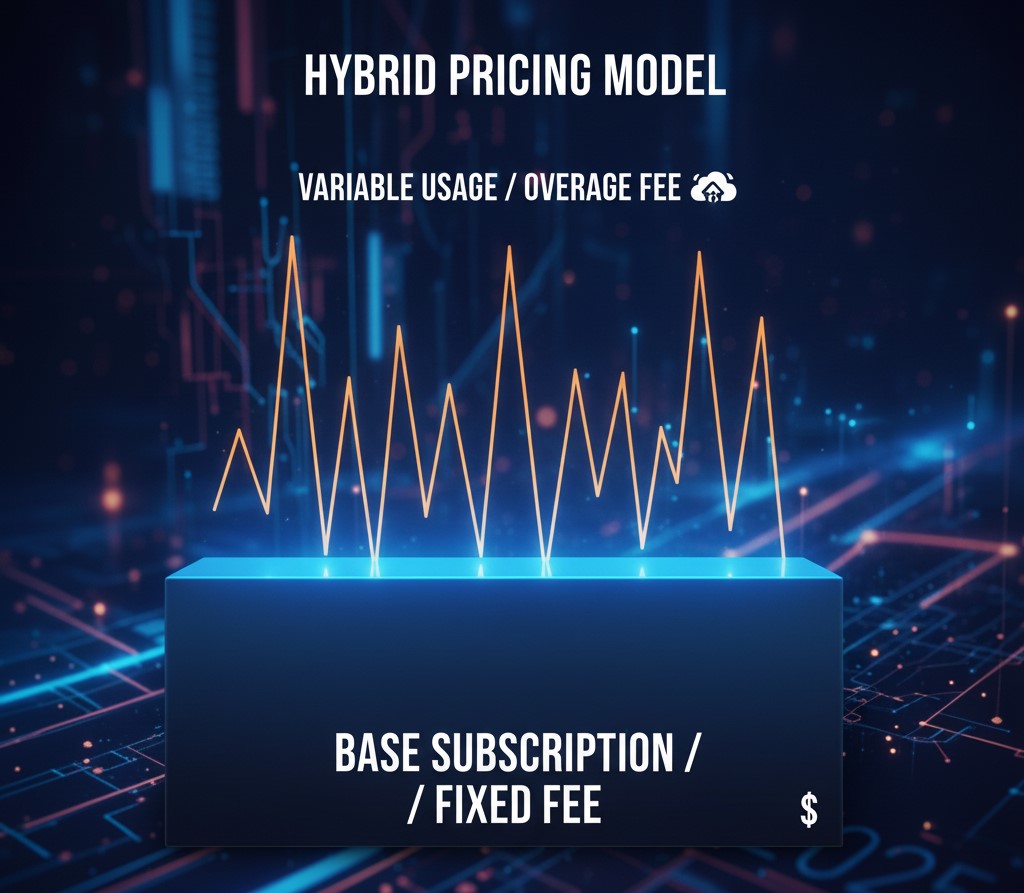Introduction: Why Your 2025 SaaS Pricing Strategy Needs an Overhaul
In the competitive world of Software as a Service (SaaS), your pricing page isn’t just a receipt—it’s your ultimate growth lever. While customer acquisition gets all the buzz, studies consistently show that optimizing your pricing strategy has up to a 4x greater impact on your bottom line than improving conversion or retention.
For 2025, simply defaulting to the old Per-User or Tiered models isn’t going to cut it. The market is evolving rapidly, driven by AI, increasing customer demand for flexibility, and a tighter focus on proven Return on Investment (ROI). Modern search algorithms, which rely on NLP (Natural Language Processing), reward content that deeply explores these nuanced topics, moving beyond basic definitions to cover specific use cases and SaaS pricing strategy trade-offs.
Here at OfferLooters.com, we constantly analyze the best software, tech deals, and money-making guides to help you scale efficiently. We’ve compiled the definitive guide to the Top 10 SaaS Pricing Models to Consider in 2025, ensuring you choose a model that aligns your cost structure with the true value delivered to your customers.
The Core 5: Fundamental & Most Common Pricing Models
These are the foundational models that have powered the SaaS economy for years. They are easy to implement and offer varying degrees of simplicity and predictability.

1. Tiered Pricing (Good, Better, Best)
This is arguably the most popular subscription model. You offer multiple predefined packages—typically Basic, Professional, and Enterprise—with escalating prices based on included features, usage limits, or support level.
- Best Use Case: Products that cater to distinct customer segments (SMBs, Mid-Market, Enterprise).
- Pro: Appeals to a wide audience and offers a clear, predictable upsell path.
- Con: Risk of “feature fatigue” if the differences between tiers aren’t perfectly clear.
2. Per-User Pricing (Per-Seat)
The simplest way to scale revenue: your price increases linearly with the number of users or “seats” added to an account.
- Best Use Case: Team collaboration tools (like Slack or project management software) where value is directly tied to team size.
- Pro: Clear, straightforward, and makes revenue generation easily predictable.
- Con: It often incentivizes customers to cheat the system by sharing login credentials to avoid paying for extra per-user pricing seats, limiting revenue expansion.
3. Flat-Rate Pricing
This model offers one product with one set of features at one fixed price—no tiers, no usage metrics.
- Best Use Case: Simple, single-purpose utilities or products aimed at a small, uniform audience.
- Pro: Extremely easy to understand, sell, and manage; offers maximum revenue predictability.
- Con: Leaves significant money on the table as you cannot monetize heavy users or upsell to larger enterprises.
4. Freemium Model
The freemium model provides a permanent free version of the product with core functionality. The goal is viral adoption, with the hope of converting a small percentage to paid subscription models.
- Best Use Case: Products with low marginal cost and a high network effect (e.g., communication, note-taking, or design tools).
- Pro: Lowers the barrier to entry, drives high-volume customer acquisition, and creates a base for organic word-of-mouth.
- Con: High infrastructure costs for the non-converting “free riders.”
5. Feature-Based Pricing (À la Carte)
Unlike tiered pricing, which may limit how much you use (usage-based billing), this model gates specific, high-value feature-based tiers (e.g., API access, white-label reporting, single sign-on) behind higher paywalls.
- Best Use Case: Modular products where core functionality is the same but specific advanced features drive outsized value for an enterprise segment.
- Pro: Highly customizable and allows customers to truly pay only for what they need.
- Con: Can be complicated to manage and requires constant customer education on which features are included in which plan.
The Growth Accelerators: Value-Aligned & Usage-Based Models
For 2025, the most profitable companies are increasingly moving away from simple user counts and towards models that directly align cost with customer value.

6. Usage-Based Pricing (Consumption/Pay-as-You-Go)
This model (also known as “pay-as-you-go”) charges customers based on their actual consumption of a clearly defined value metric. Examples include: per API call, per GB of storage, per email sent, or per video minute processed.
- Best Use Case: Infrastructure, developer tools, and products with high variable costs (like AI/ML processing) where costs scale directly with use.
- Pro: Dramatically lowers the customer’s barrier to entry and ensures that costs scale perfectly with value received, leading to higher Net Revenue Retention (NRR).
- Con: Creates a revenue predictability challenge for the SaaS provider and can lead to “sticker shock” for customers if not monitored correctly.
7. Value-Based Pricing (Outcome-Based)
This is less a model and more a SaaS pricing strategy philosophy. Price is set not by your cost or your competitor’s price, but by the economic value your product creates for the customer (e.g., charging 10% of the cost savings you generate).
- Best Use Case: High-impact business intelligence or sales conversion tools that deliver a clear, measurable ROI.
- Pro: Maximizes revenue by capturing a share of the value you create; justifies high prices.
- Con: Requires deep market research to define the correct perceived value metric and can be difficult to quantify for every customer.
8. Per-Active-User Pricing
A crucial variation of the standard Per-User model. Instead of charging for every provisioned seat, you only charge for users who actively log in or perform a key action within a billing cycle.
- Best Use Case: Collaboration tools in large organizations where team rosters constantly fluctuate, but active usage is key to value.
- Pro: Eliminates the major friction point of traditional per-user pricing, building immense trust and reducing customer resistance to adding more seats.
- Con: Revenue can fluctuate month-to-month, impacting revenue predictability.
Emerging & Advanced Models for the Enterprise Market
These hybrid pricing structures are quickly becoming the standard for modern, complex B2B solutions in 2025.

9. Hybrid Pricing Models
The ultimate strategy for balancing predictability and scalability. It combines a fixed base subscription (for core access, support, and basic features) with a variable, usage-based billing component for overages or premium consumption.
- Best Use Case: Nearly all modern infrastructure and data platforms (e.g., charging a fixed monthly fee plus a variable rate per API call over a set allowance).
- Pro: Offers the best of both worlds—stable, recurring revenue from the base fee, plus high-margin expansion revenue from usage.
- Con: The most complex model for billing and requires highly transparent monitoring tools for the customer.
10. Credit-Based/Tokenized Pricing
Customers pre-purchase “credits” or “tokens” (often bundled in tiers) that are then redeemed for specific services, like AI-generated content or complex report generation.
- Best Use Case: AI tools and products with diverse, non-standard usage actions where a single metric (like Per-User) doesn’t make sense.
- Pro: Provides customers with fixed budgeting (by buying a bundle of credits) while giving the provider control over the cost of their variable inputs.
- Con: Customers must calculate the effective cost per action, which can create a mental barrier to purchase.
Key Metrics to Define Your Value Metric
Regardless of the model you choose, every successful software monetization strategy must be built on a clear understanding of value. Here are the associated terms that dictate your pricing power:
Customer Lifetime Value (CLV)
This is the total revenue you can expect to earn from a single customer throughout their relationship with you. Your model must be designed to maximize this number.
Average Revenue Per User (ARPU)
How much money you make, on average, from each of your paying customers (or users). Increasing ARPU through strategic upselling and expansion is a hallmark of good pricing.
Customer Acquisition Cost (CAC)
The total cost to acquire a new paying customer. Your chosen pricing model must ensure that CLV far exceeds CAC (a healthy ratio is typically 3:1 or higher).
Crucial Insight: Your pricing model is the mathematical expression of your company’s value. It should ensure that your best, highest-use customers are also your most profitable, leading to exponential business growth.
Conclusion: Making Pricing an Agile, Ongoing Process
Choosing one of these 2025 SaaS pricing models is not a one-time decision; it is an agile, ongoing process of testing, analysis, and optimization. The biggest mistake you can make is to set your pricing once and forget it. Regular audits, A/B testing of pricing pages, and deep NLP analysis of competitor models are necessary to maintain an edge.
Your focus should be on shifting from models that restrict your growth (like rigid Per-User plans) to Value-Based Pricing models that allow your revenue to expand effortlessly alongside your customer’s success.
Ready to find the ideal software to support your new, optimized pricing structure? You can often find the best top software, tech deals for analytics, billing, and automation—tools essential for managing complex models—right here at OfferLooters.com.
Frequently Asked Questions (FAQs)
Q: What is the primary benefit of usage-based pricing in 2025?
A: The main benefit is that it directly aligns the customer’s cost with the value they receive, which lowers the initial barrier to entry and ensures that costs perfectly scale up as the customer derives more value and increases consumption.
Q: How often should a SaaS company re-evaluate its pricing model?
A: At least every 6 to 12 months, or immediately following a major product update or the launch of a significant new feature. The market value of your product changes quickly, and your price must reflect that.
Q: Is the freemium model better than a free trial?
A: It depends on your goal. Freemium is better for acquisition and viral growth (getting maximum users), while a time-limited free trial generally has a much higher conversion rate to paid plans because it creates a sense of urgency.
Q: What is the most common mistake in SaaS pricing?
A: The most common mistake is focusing on cost-plus pricing or competitor-based pricing rather than a value-based pricing strategy. This results in products being priced far below the actual economic value they create for the customer.
Q: What is a “Value Metric?”
A: The Value Metric is the unit of measure a customer pays for that aligns directly with the value they get from the product. Examples include GB of storage, number of active users, API calls, or contacts in a CRM.